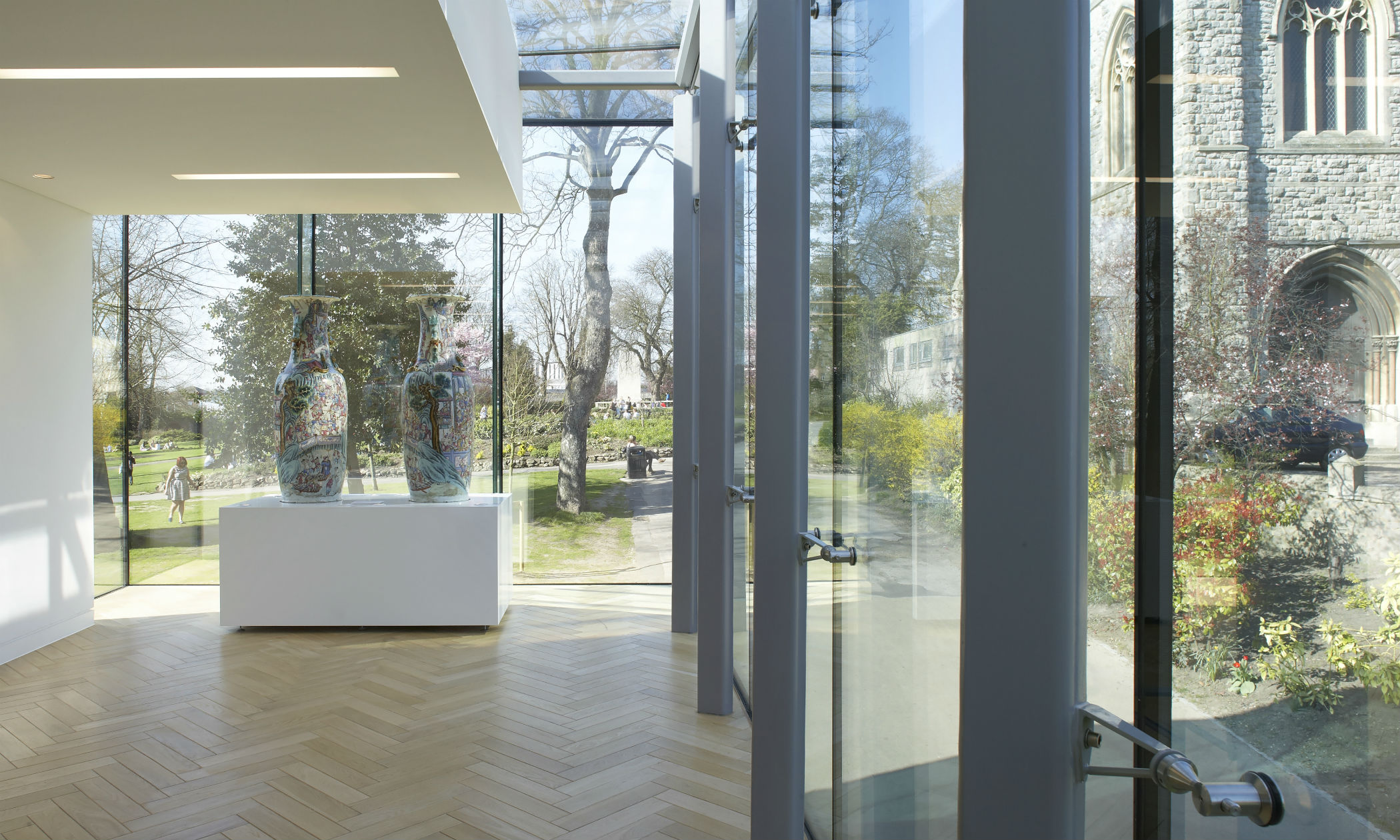By Steve Finnis, volunteer with the QORWK Regimental Museum
Nowadays the Queen’s Own Royal West Kent Regiment exists as a memory for some old men, on war memorials, on Colours in All Saints Church, and in this museum. So where did it go?
In 1945 the regiment had five battalions operating. The three Territorial battalions were stood down after the war, and only the two regular battalions, 1st and 2nd remained in being.
All in all, there were 64 British Line infantry regiments, plus 5 regiments of Foot Guards and the Parachute Regiment, all of them with two or more battalions, and it became evident that the country had more soldiers than it needed.
The withdrawal from India in 1947 freed up an awful lot of soldiers, and although the peace in Europe was by no means guaranteed, the needs of occupation were becoming less.
The first stage was to cull some 2nd battalions, and in June 1948 2nd QORWK disappeared. But this raised more problems. The idea of two battalion regiments was that one would serve overseas while the other remained at home, training, recruiting and sending men to the overseas battalion as needed. With one battalion, this could not happen, although the recruiting problem was partly solved by the continuation of National Service. When 1st QORWK went to Malaya in 1951, they had to be supported by soldiers from other regiments from the Home Counties.
In 1958 the process of amalgamation began and in 1961 the Queen’s Own Royal West Kent Regiment was merged with The Buffs, the Royal East Kent Regiment. This amalgamation was amicable enough, but it meant that the Queen’s Own Buffs, the Royal Kent Regiment had its Head Quarters at Canterbury, so the Depot at Maidstone was closed.
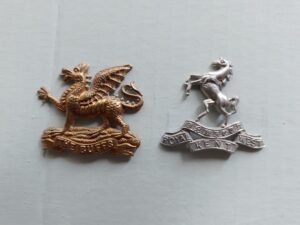
Cap badges of The Buffs and the Royal West Kent Regiments
The Queen’s Own Buffs never had a cap badge of their own. The War Office had decided that several regiments should be banded together as brigades and wear a common cap badge. So, the unlovely and unloved Saxon Crown of the Home Counties Brigade started its short existence.
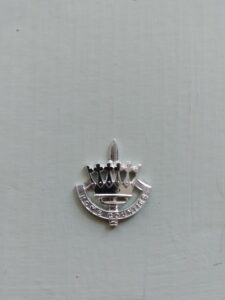
The Home Counties Brigade Cap Badge
Now, the Regimental Museum had been a part of the Depot, and it was felt that it ought to remain in Maidstone, so Maidstone Borough Council offered a room in Maidstone Museum, which opened in 1960. It continued to be run by a regimental committee but was finally entirely taken over by Maidstone Borough Council in 2007.
The Depot itself was largely demolished for road works, but the officers mess remains, and you can still dine in, at the Miller and Carter steak house.
Sadly, but inevitably, the process of amalgamation carried on. In 1966 The Queen’s Own Buffs were amalgamated with The Queen’s Royal Regiment (West Surrey), The East Surrey Regiment, The Royal Sussex Regiment and The Middlesex Regiment (Duke of Cambridge’s Own) to form The Queen’s Regiment, amid many promises that this was the last change, and everybody would be allowed to settle down.

Cap badges of The Queen’s Royal Regiment (West Surrey), The East Surrey Regiment, The Royal Sussex Regiment and The Middlesex Regiment (Duke of Cambridge’s Own)
But circumstances change, so in 1995 The Queen’s Regiment was amalgamated, hugely under protest on both sides, with The Royal Hampshire Regiment to form The Princess of Wales’s Royal Regiment (PWRR)
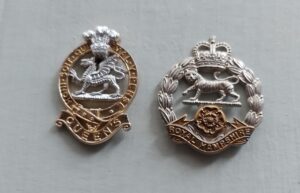
Cap badges of The Queen’s Hampshire and The Royal Hampshire Regiment
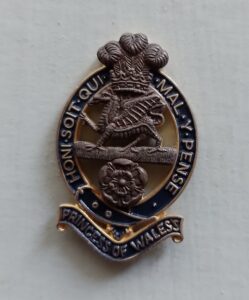
Cap badge of the Princess of Wales’s Royal Regiment
The “Tigers” badge includes elements from the forebear regiments; the Buffs Dragon, the Hampshire Rose and the Middlesex Prince of Wales’s Plumes. But long committee arguments ensured that the other regiments were also fully represented. The collar badge consists of the Royal Sussex Star and Rousillon Plume and our White Horse, whilst the buttons contain the East Surrey Star and the Queen’s Pascal Lamb.
The Hampshire’s Tiger has been adopted as the regimental nickname and is worn as a sleeve ornament.
And, nearly thirty years later, the “Tigers” are flourishing, and hopefully will remain so, undisturbed except for calls of duty.
All cap badges illustrated here are unpolished for conservation reasons.
